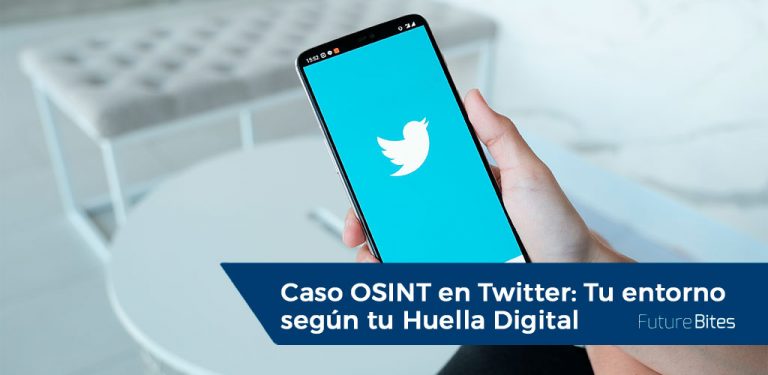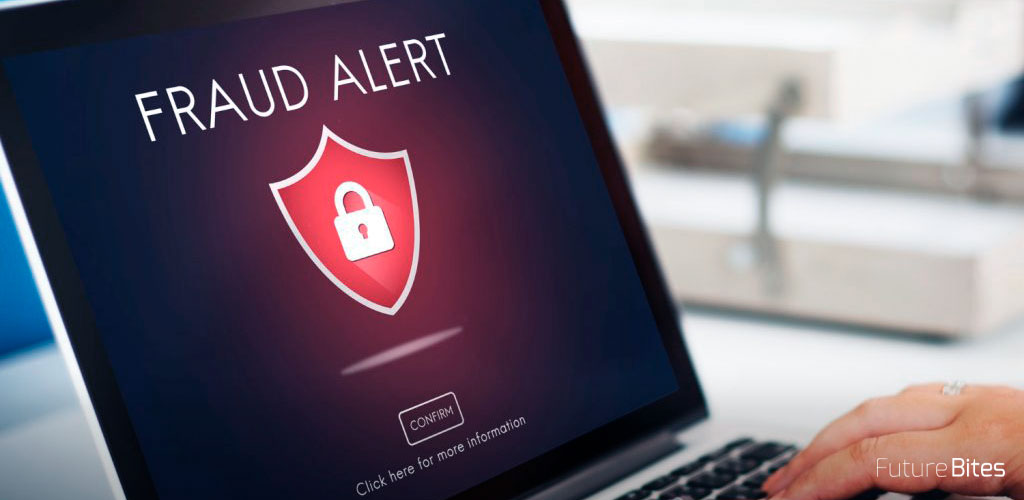What can your Fingerprint say about you?
When it comes to profiling a person's environment, something very much required in a Fingerprint investigation is to perform an analysis of their environment. This is one of the most complex objectives in an OSINT case because of everything it encompasses. One might think that it's just the contacts. But sometimes the places you visit or the thematic circles you intervene in are taken into account. Of course, this information can be obtained through social networks such as Twitter, Facebook, Instagram or LinkedIn.
As discussed in the article Using OSINT to investigate the FingerprintThe new Facebook page offers a wide range of features, such as bookmarking places you've visited, posting photos of your friends or family, activating your location, and showing where you work or have studied in your presentation block, can say more about you than you might think. But what many people don't take into account is that your Fingerprint is not only yours, but also your contacts'.
Tell me who you hang out with and I'll tell you who you are: OSINT case on Twitter
Do you remember that innocent group of school alumni on Facebook? Or those high school friends you tweeted with years ago commenting on last weekend's hangover? Knowing which people are part of your environment can help prevent many risks. Sometimes your contacts are even analysed in order to better define your personality. But in social networks the same question always arises: Which contacts are part of your digital environment and which are really contacts in your physical environment?
In a single profile there can be hundreds or even thousands of contacts, how can you know which ones matter? Analyzing all of them would be a real madness. But what if we could rate a user's contacts without having to look at each and every profile? Let's go with an OSINT case on Twitter and meet for this example John Doe, a man whose profile we have on Twitter:
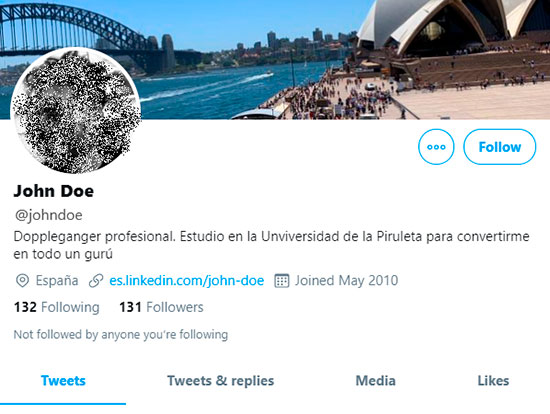
Fingerprint on Twitter: followings, followers and followbacks
Twitter is a social network that opens the can of what may be one of the greatest challenges of the analysis of the environment: to qualify the contacts. Having accounts with thousands or millions of followers, for personal, professional, commercial purposes, the special feature and that it shares with Instagram of followings, followers and followbacks... how do we face such an overwhelming volume of possibilities? how do we know which are the contacts that matter? Or better yet, how do we know which users are people?
At first glance Twitter is perhaps one of the last social networks we would go to in order to discover your closest contacts. However, not only is it possible to achieve this, but in the end it can provide us with even more information than we could ever have obtained on another social network such as Facebook. To achieve this, the first thing to explain is the categorization of contacts according to their type:
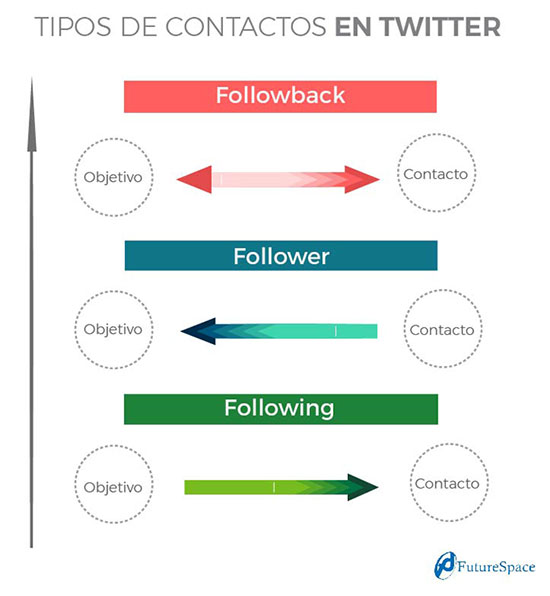
To find out the typology of each contact in our target profile, it is usual to make use of socialnetwork analysis (SNA) techniques. That, yes, it serves to analyze any kind of information in social networks such as Facebook, Twitter, LinkedIn or Instagram. But no, it is not only used in this type of social networks. Other uses of SNA have come to exemplify the logistical flow of a patient in a hospital in the United States.
The main characteristic of a discipline like SNA is to reflect any kind of information in node and relationship networks. In this case, painting will show us quickly and visually how the contacts are connected to our target profile. In our example, John Doe has 55 followbacks, 54 followers and 75 followings.
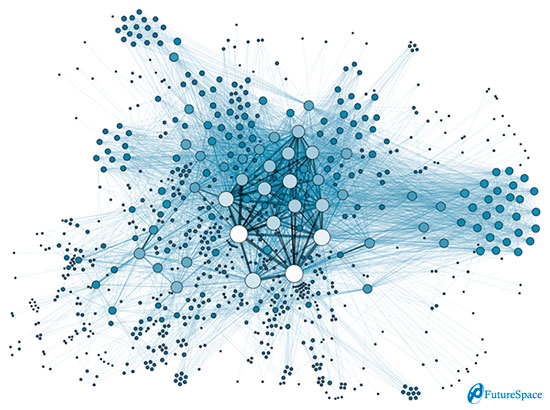
With this data, we made a scatter plot with these users under the variables "in degree" (number of followers they have) and "out degree" (number of followings). In this way, we could see who is closer to the point of origin (0.0) and who, consequently, would be user profiles that give personal use to the account by having fewer contacts, thus discarding accounts of influencers, companies, organizations, etc. and finding contacts that are very presumably friends in the real life of our target.
This theory is based on two assumptions that apply to both Twitter and Instagram and that complement each other. On the one hand, the ratio follower/following, which compares the number of both contacts in order to establish what a profile looks like. Although it is usually used to measure the level of an influencer, in our case finding contacts with a ratio close to 1 (similar number of followers and followings) implies that they may be average users of the social network. On the other hand, and although it is an assumption, identify those who are between (0.0) and (1000,1000) because they also have high probabilities of being average users (they will have up to 1000 followers and 1000 followings)
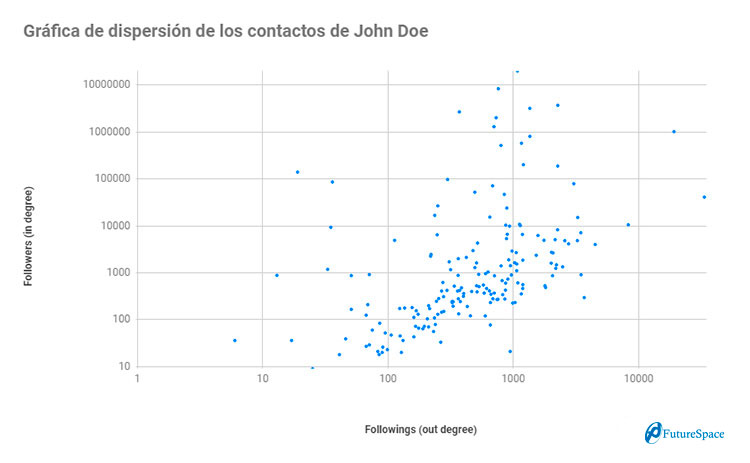
The qualified environment: your Fingerprint's choices in the OSINT case on Twitter
In the case of John Doe, the protagonist of our OSINT case on Twitter, by eliminating those contacts that are located outside the quadrant between the point (0.0) and (1000,1000) we reduce by almost half (from 184 to 99) the contacts that are worth analyzing if we want to determine the environment of this user, since they will most likely be normal users or, in other words, people. Thanks to this, and without going into the analysis of the activity of the profiles, we will remove a large part of the accounts of companies, media, influencers, bots or any other user that we would most likely not be interested in analyzing.
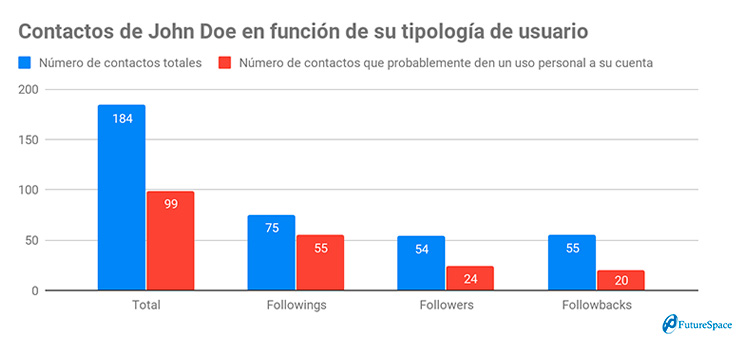
Nevertheless. Let's go further. As we can filter by the condition of each contact, we know that of the 99 users, 20 are followbacks (the ones that deserve our attention), 24 followers and 55 followings.
This way, we can focus in this case OSINT with Twitter on analyzing only the 20 followbacks. This way we reduce from 184 to only 20 users that with very high probability deserve our attention to know the social circle of the target. Knowing if they are family, friends or colleagues would be the next step to take, a goal that is achieved by analyzing their activity. Finding out the degree of closeness and even influence on John Doe by how they relate on Twitter is usually the next step. You could also check if they are contacts in other social networks or the closeness to the target by the number of contacts they share. In the end it's all about possibilities that help define who you are in the digital world, but also who you are in the physical world. And that is the real key, to be aware of what our contacts say about us.

